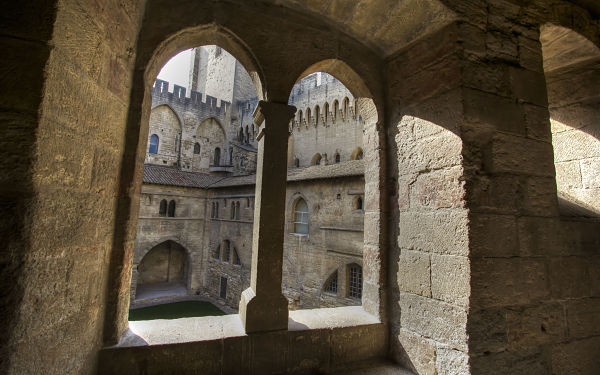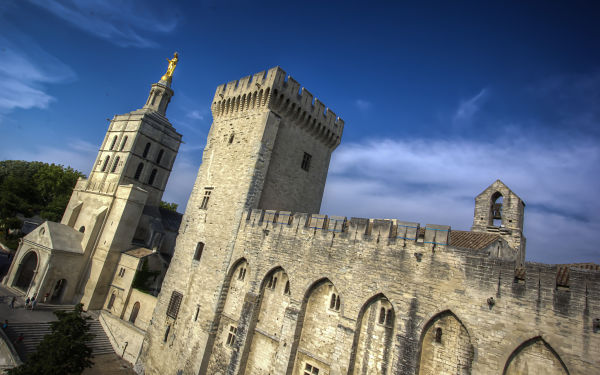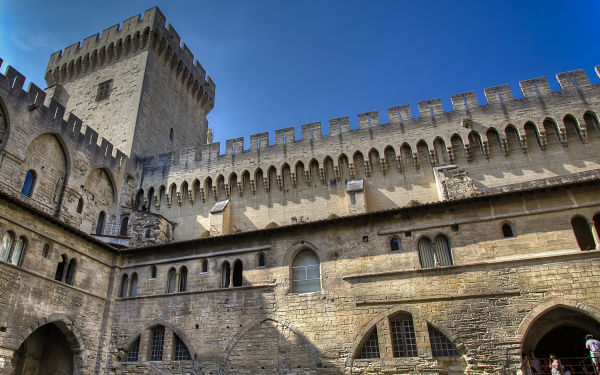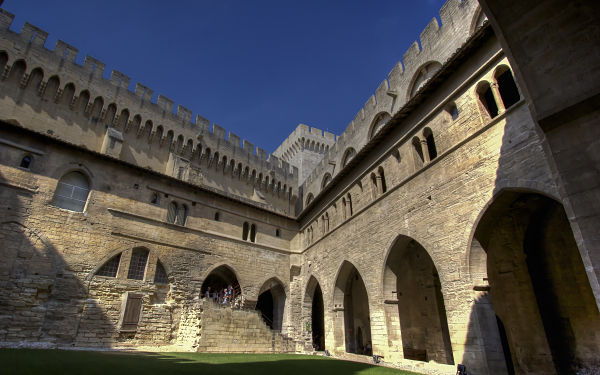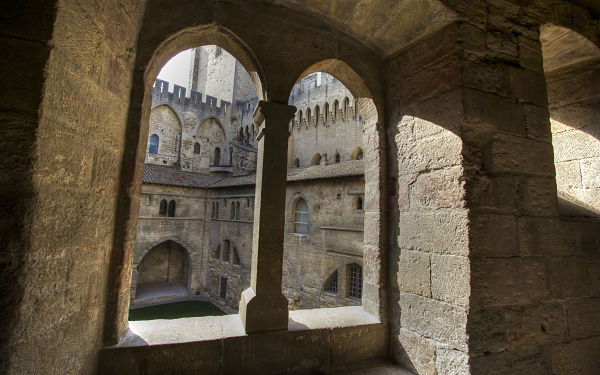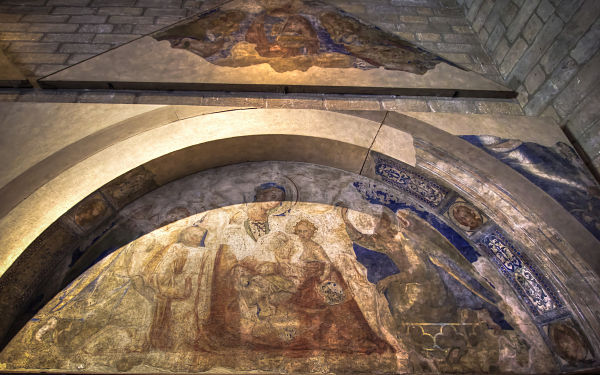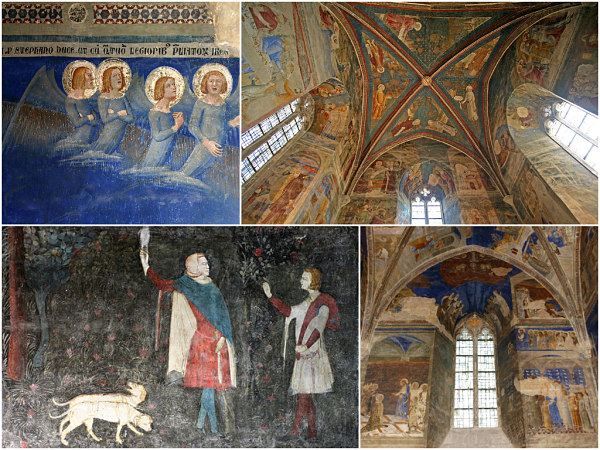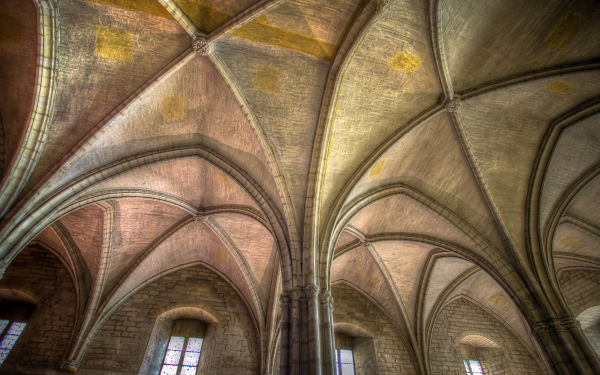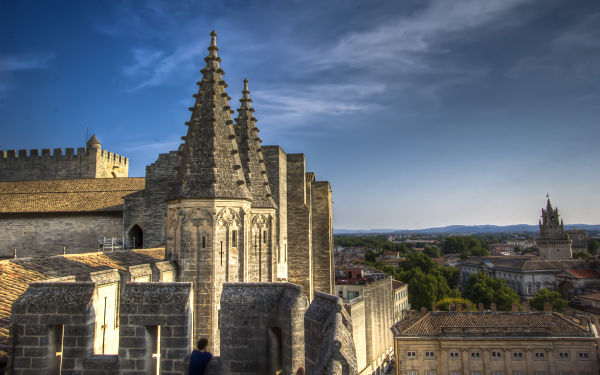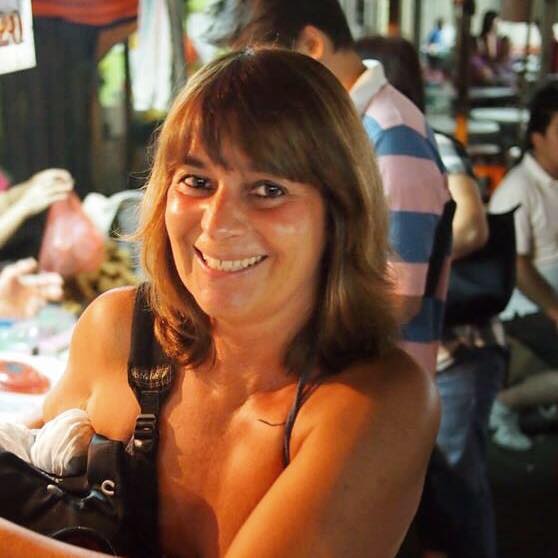The magic of the ‘Palais des Papes’ is in its magnificence and the emotions it inspires.
Magnificent and austere, the ‘Palais des Papes’ (or the Papal Palace) in Avignon is one of the most breathtaking masterpieces of Gothic architecture, and an example of the role and power of the Catholic Church in the late Middle Age.
Compared to the Vatican, with its Classic and Baroque architecture, the ‘Palais des Papes’ looks more like a fortress than a palace, evoking the mansion of a warrior king and not the home of the spiritual head of Christianity. In fact, it perfectly reflects the temporal power of the Pope during the Middle Age and until 1870, as well as the troubled political situation, which led the move from Rome to Avignon of the Papacy between 1309 and 1378.
Started in 1335 and completed in less than 20 years, not only is the ‘Palace of Popes’ the largest gothic building in Europe, it is also one of the most stunning and was inscribed as a UNESCO World Heritage Site in 1995 together with the Episcopal Ensemble and the famous Avignon Bridge.
Like the external structure, the large Benoit XII Cloister is austere, its beauty defined by the perfect proportions of the architectural elements. However, the interiors were once richly decorated with tapestries, frescoes, statues, wooden ceilings.
Part of the past lavishness is still visible in the extraordinary frescoes by Matteo Giovannetti in the Saint Jean Chapel and in the Grand Audience Hall, in the wonderful wooden ceilings and other superb wall paintings.
After the Papacy eventually moved back to Rome in 1378, the ‘Palais des Papes’ remained under the Pope’s control but having lost its importance, it slowly deteriorated. In the early 1800s it became a military barracks and a prison until 1906, when the palace was cleared out, restoration began and it became a Museum.
The importance and appeal of the Papal Palace was further enhanced with the creation of the Avignon Festival, the arts festival established in 1947 by Jean Vilar attracting every summer thousands of visitors in the city and whose most important performances take place in the magnificent Court of Honor.
The magic of Avignon ‘Palais des Papes’ is in the many emotions it inspires: its huge proportions, made me feel very small, the austere external architecture led me to a different age, and the rooms decorated with the beautiful 14th Century frescoes took my breath away. An experience impossible to forget.
Practical Information:
Getting there: Avignon can be easily reached by high-speed train (TGV) from the main cities in France. The main international airport in the vicinity is Marseille, connecting over 55 destinations.
Lodging: I stayed at the very comfortable and centrally located 4 stars Hotel de l’Horloge. Avignon offers however a broad array of accommodations including hostels, bed and breakfast, budget hotels and upscale hotels. You can book it here ➤ Booking.com
Restaurants: Lots of cosy restaurants, most of which with al fresco dining. The stylish 83 Vernet serves excellent food in a beautiful courtyard of a superb building dating back to the 16th and 17th Century. Another good option is the informal Cuisine et Comptoir, proposing traditional local dishes as well as creative cuisine with international influences.
Palais des Papes: More information on the Palace, its history, opening hours and costs on the website.
______
Note: A big thank you to Atout France Italy, Provence Guide and Avignon Tourisme for the invitation to discover this wonderful area of Southern France and visit Avignon and the magnificent ‘Palais des Papes’. As always, opinions, thoughts and emotions are only mine.
More reading: Mesmerized by Marseille and the ‘Quartier Le Panier’

